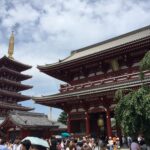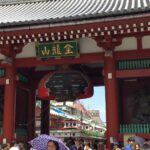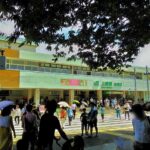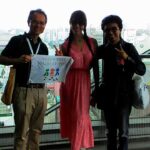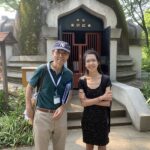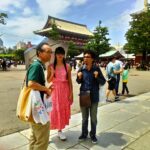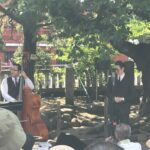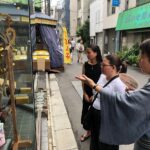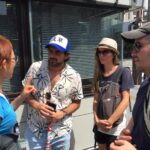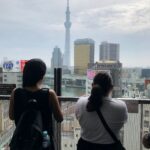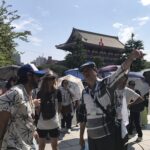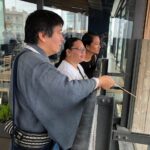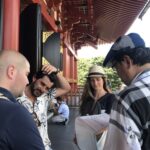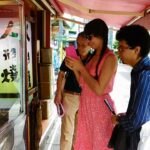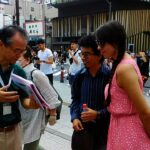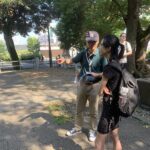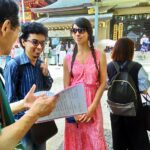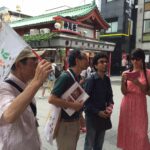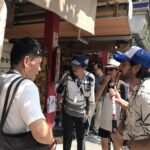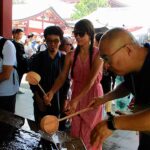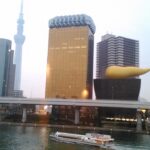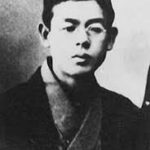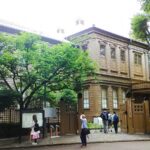Thank you for joining our Tokyo Free Walking Tour in Asakusa and Ueno.
On that day, July 28, we welcomed 9 guests on our walking tour.
These people came from different corners of the world, including Australia, Colombia, Malaysia, Mexico, Philippine and Spain.
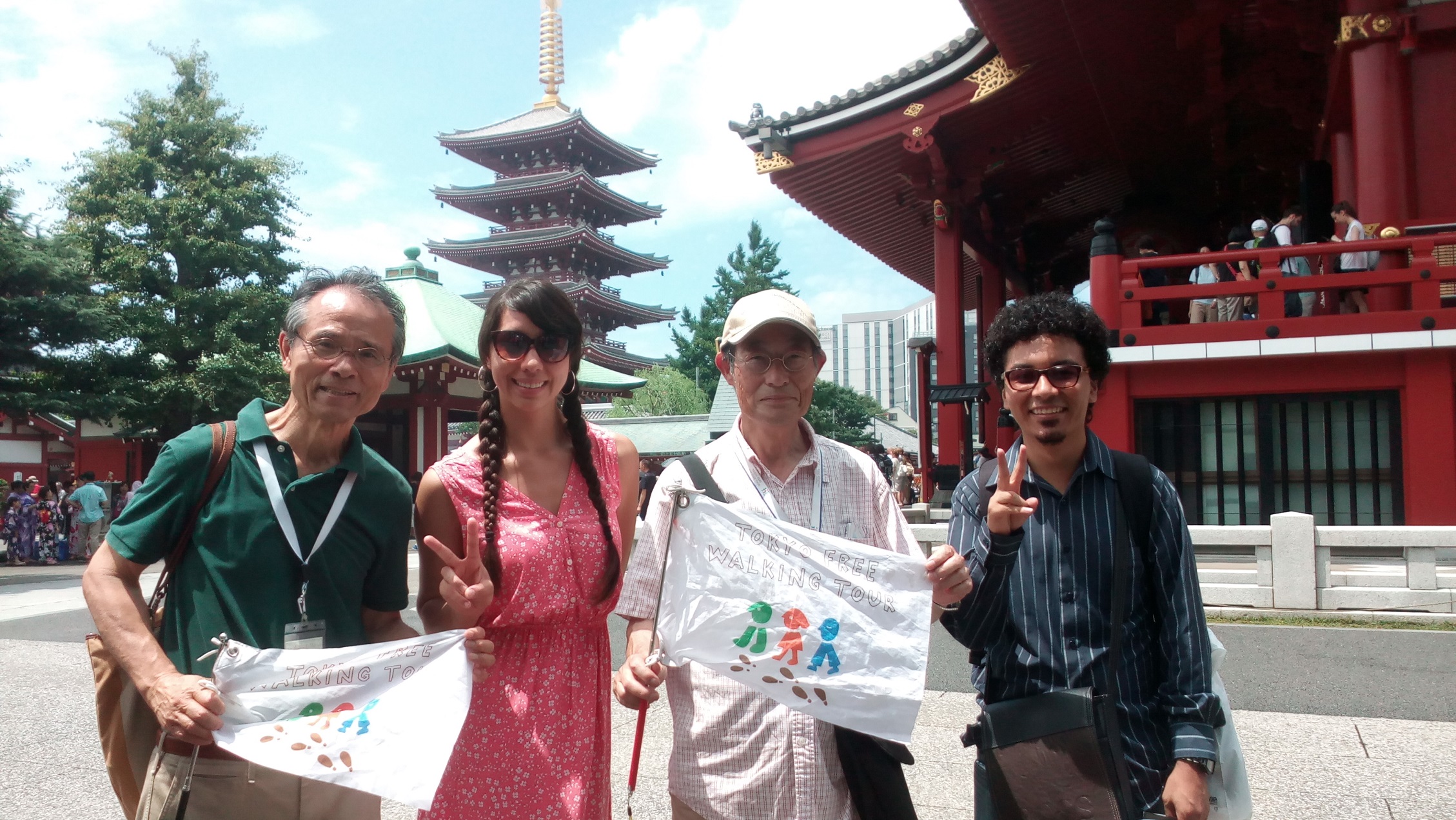
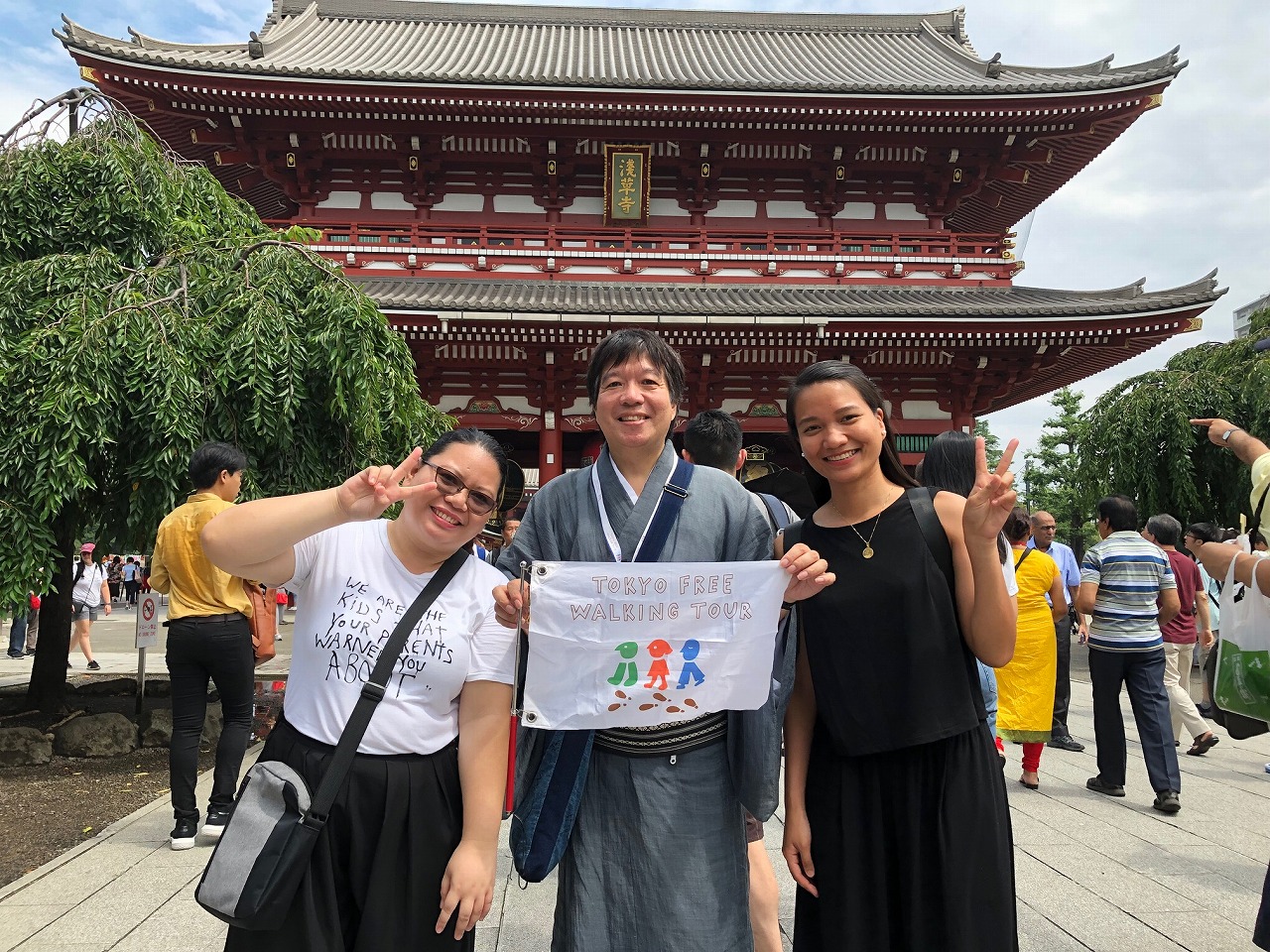
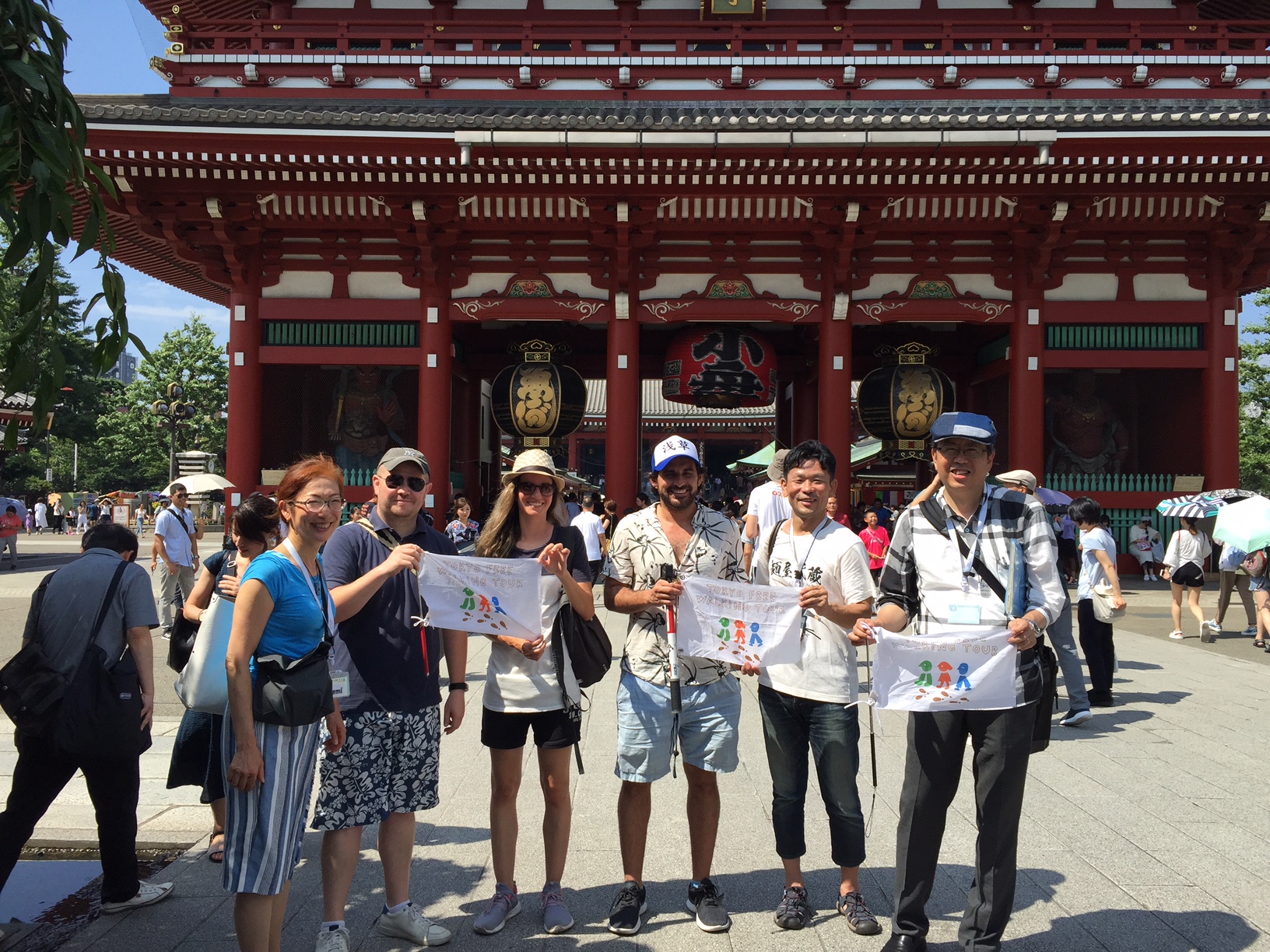
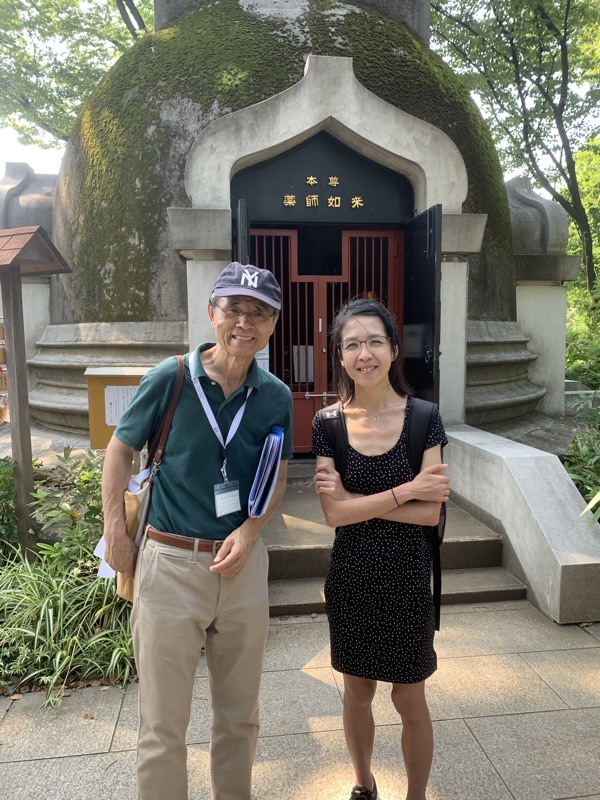
Recently, the Japan Meteorological Agency has announced the end of the rainy season in Tokyo and its neighboring prefectures in the Kanto region.
This long-awaited report about the shift from rainy to summer season has inspired those people who are looking forward to finalizing their summer plans since they can now choose the perfect days for their travel and activities.
On the morning of July 28, the temperature rose up to 30 degrees Celsius and reached the high of 32 degrees and more, during the early afternoon.
This is the typical pattern of weather changes during the season called “tsuyuake toka”, which can literally be translated to “the ten days after the end of the rainy season”.
During the tsuyuake toka, a mass of warm air prevails over the entire Japanese island.
In effect, we have an immediately stable weather, characterized by humid climate and hot days, which normally lasts up to around two weeks.
The warm atmosphere in the country truly brings the essence of summer days, however, it is also a sign that typhoon season about to come.
During this hot and humid day in Tokyo, we were able to meet 9 guests who are enthusiastic to tour around Ueno Park and its neighboring areas in Asakusa.
- Kaminarimon Gate
- Ueno Station
At first, we started our morning tour at 10:00 A.M. in Asakusa.
Our walking stated from an iconic location in the area named “Kaminarimon Gate” or Thunder Gate and ended at Asakusa Shinto Shrine.
All of the location on our tour route were full of people, who were proceeding to the main hall of Sansoji Buddhist Temple.
Next, we have implemented the simultaneous tours to efficiently use time and to mobilize our tour guides in these two locations at the same time during the afternoon.
The Ueno tour started at 1:30 PM, and so did the Asakusa tour at 1:00 PM.
Observing the influx of people coming from the Ueno Station entrance, we began waiting for the participants of the Ueno tour for the afternoon.
After greeting each other, we started our stroll in the Ueno Park for 90 minutes.
Known as the “Village of Culture” and as described in our previous blog posts, Ueno Park is huge enough to accommodate many attractions, including art museums, a zoo, a Buddhist temple, a Shinto shrine, and other notable locations.
The previous day, June 27, Sumida Firework Festival successfully ended, though, this river is still rich in historical attractions.
Sumida River runs from the northern areas of Kanto region through Asakusa and into Tokyo Bay.
This river has blessed the communities on its the riverbanks since ancient times.
Around 7th century, two fishermen brothers found a small Buddhist statue in this historical river.
This Buddha statue has been kept in Asakusa Sensoji Buddhist Temple – one of the must-to-see locations in Asakusa of Tokyo.
The river also inspired a Japanese musician in Meiji era, Rentaro Taki, to create an impressive song, titled “Hana”, or “Flower“
This song features sailing boats busily journeying on the Sumida River during a lovely spring weather.
- The Sumida River
- Two fishermen
- Rentaro Taki
- the Sōgakudō Concert Hall
Rentaro was a pioneer of Japanese song scales along with European style scale.
He was born in Tokyo and finished a degree in Music in Tokyo Music School in Ueno.
Right after he gained popularity in Japan, he studied Germany to accumulate his academic career during Meiji era(mid 19 centuries).
He dedicated himself to the development of Japanese music.
Although he died at 28, we can see his legacy through his songs that are still popular today.
Up to now, this song is still widely found in Japanese music textbooks and adapted as “Song of Sumida Ward”, which is the community of the riverbank.
Admirably, the establishment of the music academy building, where he learned, remains one of the Japanese cultural assets -an initial period of Japanese music hall called the Sōgakudō Concert Hall in Ueno Park of Tokyo.
(By Arac)


